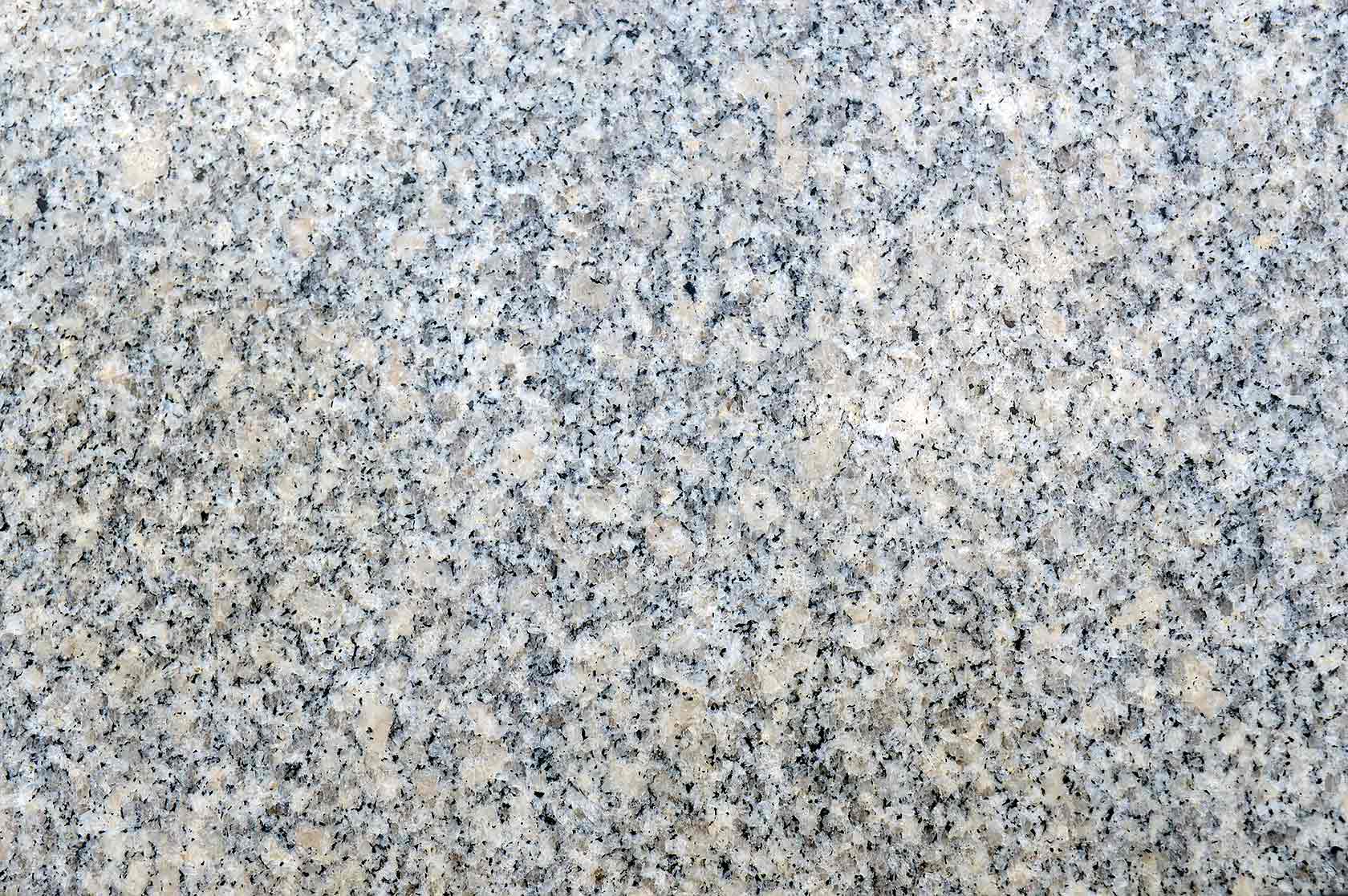Granite Composition
As one of the most resistant and solid natural materials, granite composition includes a wide range of minerals responsible, amongst other things, for its iridescent appearance. It is believed that the name for this stone was coined by the Italian scientist Andrea Cesalpino in the mid Sixteenth Century, after studying its coarse-grained texture. This is a rock used for both construction and design projects, becoming one of architects’ favorite natural material.
How does Granite form?
Granite is an intrusive igneous rock. It forms when molten magma cools down and solidifies deep under the Earth’s crust. This rock is made essentially of 3 minerals: quartz (its presence is between 20 and 60%), feldspar, and mica. When such mineral impurities crystallize they take the shape of grains, hence the most recognizable and typical feature of granite surface, also called phaneritic.
As in the case of Roman Travertine, depth influences the process of formation of granite. Since this happens at tens of thousands of kilometers below the Earth’s crust, granite results in a strong and extremely shock-resistant material. Its hardness scores 6 to 7 on Mohs scale (1 is the softest, as per chalk, and 10 is the hardest, as per diamonds; while Italian travertine and good quality marbles score 3 to 5 on the same scale). During the long metamorphic process, new transformations may occur to the already solidified rock, due to heat and pressure. As a result, granite resistance and compactness increase. This rock is so hard that one cubic meter equals to around 3 tons of weight!
Despite being well distributed across the globe, the most conspicuous granite deposits are located in Italy, Norway, Madagascar, and Ukraine. In many cases, these sites are indeed mountains. Their orogeny started within the Earth, with the magma solidification process. Then, thanks to the constant movement of tectonic plates, granite masses may reach the surface: this is the case, for instance, of the Half Dome in Yosemite National Park.

Granite colors
In nature many different colors of granite exist. In other words, it all depends on the chemical and mineralogical composition of granite. Following the concentration of feldspar and mica, one may obtain light or dark granites (yellow, pink, red, white, and so on). Also, there are even darker granites, namely, green, blue, or black, for which the presence of mica is massive.
Matte granite resembles concrete: gritty to the touch, grey to the sight. However, in order to get the most out of granite tonal hues, the polishing process is fundamental. Granite slabs undergo several steps of abrasive polishing: the deeper this is, the shinier the surface will look.
Blue Labradorite, for instance, belongs to the same geological group as granite. Its glossy texture has sparkling, mesmerizing tones called “labradorescences”. This Granite uniqueness results from its dark to black background enriched by bright blue or green splashes.


Granite properties
Granite intrinsic properties make this material suitable both for construction and interior design projects. Not only its compactness makes it perfect for bearing heavy weights, but also the fact of being naturally waterproof is considered a big plus. Therefore, tiling floors with granite tiles is a great option both indoor and outdoor.
Moreover, the complete absence of pores on its glassy, shiny, and smooth surface translates into simple cleaning procedures. In general, granite requires minimum maintenance. Therefore, it is highly recommended for worktops, kitchen countertops, decorative elements in kitchens and bathrooms, sinks, and shower plates.
The great thing about granite is that it easily blends and complements furnishing in color and style. It helps to confer a classic or modern look to the whole ambience. Furnishing too may be embellished with granite details, like doors or shelves.
In particular, labradorite blue granite is highly appreciated by interior designers that can combine light-colored spaces with dark elements for sophisticated visual effects. Vice versa, a floor covered with labradorite blue enhances the depth of the room.
Luxurious edifices, no matter if they are meant for commercial or residential use, quite often display granite cladding or flooring in the hall or for the staircase.
Nevertheless, many modern monuments are made or dressed up in granite, but this is an aesthetical choice artists and architects have inherited from their predecessors. As far back as Ancient Egypt, granite beautiful and complex composition was used for building pyramids, sarcophagi, and obelisks.




Follow Us On Social Media: